
8 minute read
Mass Tourism Affecting Malta & its Inhabitants
Mass Tourism affecting Malta and its inhabitants: An analysis based on reviews by repeat tourists
RAISA CHETCUTI
Advertisement
R esea R che R , h ighe R N atio N al D iploma
DAVID PACE
p ape R e D ito R i N t ou R ist g ui D i N g a ND s upe R viso R
The long essay for a beach holiday, while those opting presented the results for special niche/alternative tourism of a survey with amount to 36.6% of the 41 repeat tourists. tourists interviewed. The majority of the The latter vindicates the tourists (73.2% - argument that repeat
Table 1) chose Malta as a destination on tourists may be more recommendation of family and friends. inclined to take part in
The pie-chart (Fig. 1) shows how many forms of niche and times the tourists visited Malta in alternative tourism. percentages revealing that some repeat tourists visited the country 5 or more Although the majority of the times. This is important as repeat tourists were completely tourists are the ones that usually search satistfied with their trip to for more specialised products and may even attempt to take part in Figure 1 more environmentally-friendly forms of tourism such as trekking, hiking and rural tourism.
The question concerning the reason why tourists come to Malta revealed that 45.5% come environmentally friendly Malta (63.4%), the rest (36.6%) did have some complaints including: “commuting
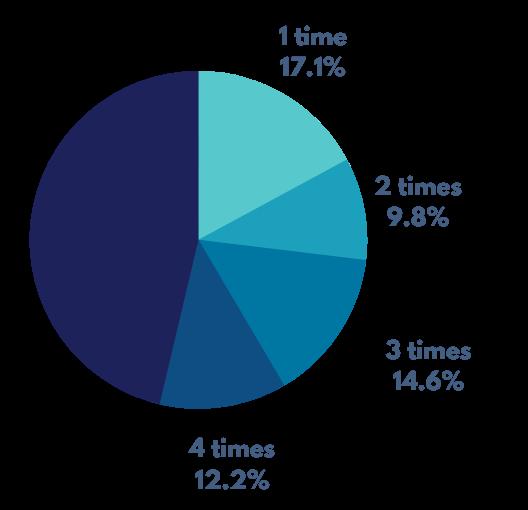
Table 1
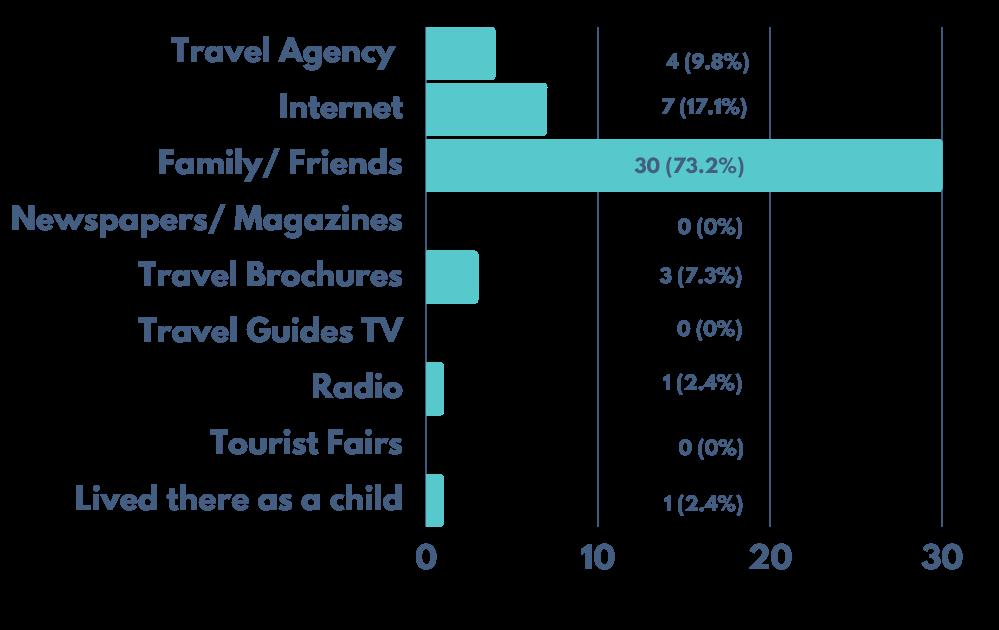
to beaches takes too long”, “Public Transport is unreliable”, “the island changed so much since his/her first visit”, “the new infrastructure destroyed much of Malta’s old world charm and heritage” and “too much dust and building upheavals everywhere you go!”. Regarding what the tourists liked during their stay in Malta, the following piechart illustrates this quite clearly.
The sunlust aspect of the island will remain one of its attractions (17%), but
it is not a very high percetage considering that “The Culture” (14%) and “The Nature” (8%) together are more popular. In fact, if the cultural attractions of the island are added together (38%) they actually exceed the popularity of the beaches by a factor of two.
Regarding dislikes (Fig. 3), public transport leads the way followed by cleanliness, traffic and building construction. It is also interesting to note that 13% of the responders answered that nothing bothers them.
A majority of the responders answered that they would visit the island again (87.8%) and the rest were not sure (12.2%). The reasons given for the positive answers were: “Malta deserves to be visited again as it is rich in heritage sites and natural landscapes,” to visit relatives and “Because of nature, sea, and cultural heritage. I hope that the construction sector considers the nature of the typical Maltese houses before building horrible block apartments! Malta is very beautiful, and it’s a pity seeing that nature has been replaced by apartments, and buildings everywhere.”
Figure 2 - Likes

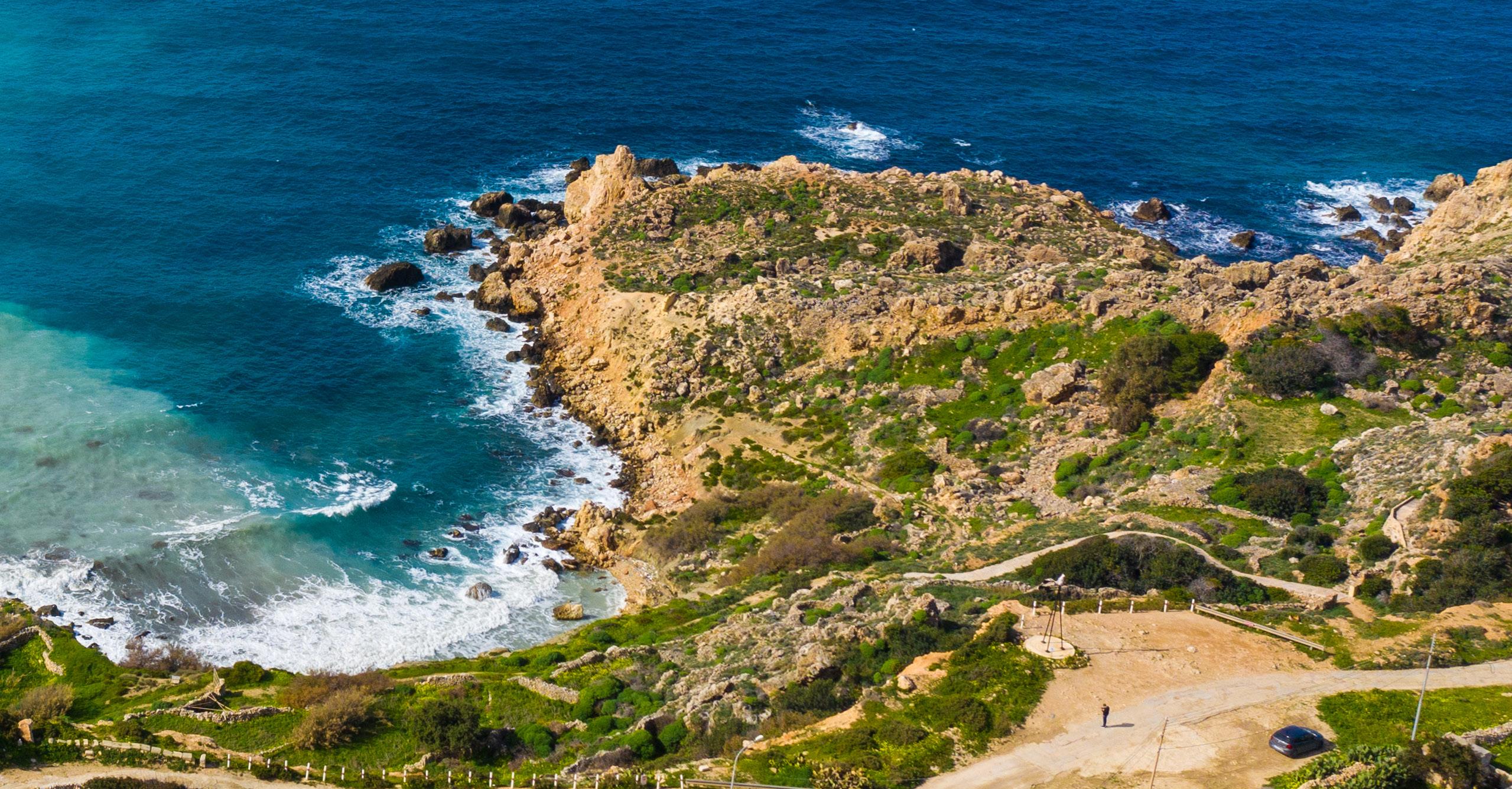
Photo: James Bianchi
Figure 3 - Dislikes
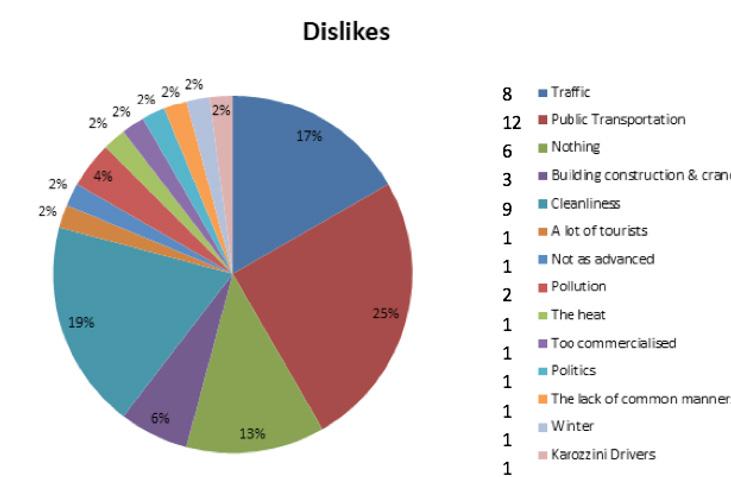
The number of respondents choosing an alternative tourism form (33) indicates that tourists do go for different experiences rather than the usual sunlust aspect of Malta. Low numbers in ecotourism, farm tourism and active tourism depend on the socio-economic background of the respondents and on the way the local touristic product is advertised abroad.
Better Public Transport
More Lifeguards Less Beaches Nature More Cultures & Traditions
Better Cleanliness
Better Infrastructure
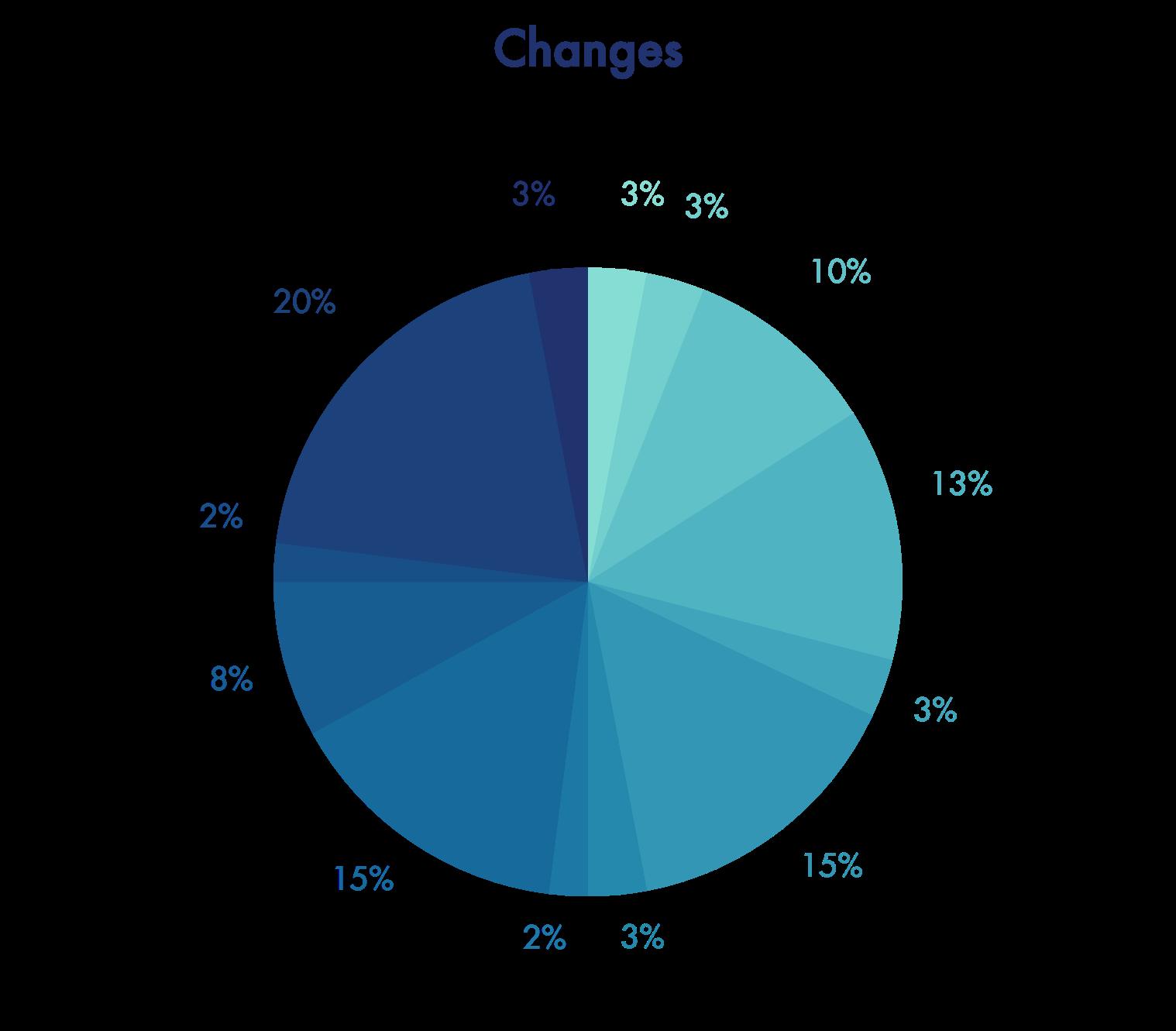
The next question focused on changes tourists would like to see during their next visit to Malta (Fig. 4).
Less Pollution
Less Tourists
The focus here is the need for better infrastructure (13%), better cleanliness (10%) and less pollution (8%) – all of which have to do with the state of the local environment.
The student presented a very detailed analysis of the demographics of the respondents. The largest age bracket was between 30 and 49 years pointing to a youngish demographic (61.1%) most of whom are employed in some capacity (58.8%) coming from 10 different nationalities.
Less Traffic
Cheaper Flights Nothing
Right-side Driving
discussion
The student performed two detailed interviews of an MHRA and an MTA official asking a variety of questions concerning the survey results. The main findings of these interviews are incorporated in the final summary of the dissertation. The student explained that the questionnaire, interviews and literature review all suggest that tourism in Malta cannot be sustained without the support of the local community, tourists and the authorities combined. Community participation can be facilitated by public hearings, advisory committees, surveys, polls, focus groups and more collaboration. Policy makers should involve the locals in making decisions and take note of the tourists’ demands.
It is also apparent that presently, the local tourism players are supporting mass tourism because it generates a lot of income despite the fact that it is completely ruining the country’s attractiveness. Both the interviews with MTA and MHRA supported this. MTA stated that Malta’s economy is more of a “volume intense destination”, rather than Mass Tourism, it still involves a huge amount of people visiting a popular destination. Reference was made to seasonality with the MTA representative commenting: “In July/August/September, we reach the highest levels” and “volumes are intense and are big as last year reaching the 2.7 million figure”. The MHRA representative explained how “mass tourism brings a lot of problems with it although it contributes a lot to the economy and to the country”.
Both MTA and MHRA wanted seasonality to improve. MTA worked on getting more flights to Malta in winter months from a variety of new destinations. It also mentioned the Baroque Festival held in January 2020 while MHRA is introducing Dark Tourism in winter months. The state of the environment was another worrying aspect of mass tourism with a myriad of road-widening and construction projects, hundreds of mature trees removed, a massive increase in construction sites
Both MTA and MHRA are aware of this; MHRA stated that the tourists’ demand is high, but the tourism quality is decreasing as Malta does not have the Malta invested in mass tourism for so long that all the players “ quality environment as it is continuously being degraded due to the authorities always looking to boost tourist numbers. Furthermore, MTA seems to be lacking awareness when it comes to dealing with the tourists’ demands as they are more focused on attracting more and more tourists with new airline routes rather than determining the carrying capacity of the island to see how many more tourists it can sustain are finding and suggesting mitigating measures so that tourists’ criticism of the local it difficult environment is dealt with. to change In addition to this research project direction analysis, it was concluded that the authorities are only focusing on how by trying to to attract tourists to Malta, but not preserving the island. Neither MTA attract higher nor MHRA have on-going tourism paying tourists, sustainability projects and both entitites are finding it challenging to help the investing authorities shift the economy from mass tourism to more sustainable in more alternatives. In reality, MTA and MHRA sustainable should be on the forefront of thinking up new incentives to promote Malta forms of in a more sustainable way. This was corroborated by the MTA official tourism and explaining how the authority is finding the environmental impacts of tourism, embarking the most challenging aspect. on carrying conclusion capacity The questionnaire revealed that repeat exercises. tourists are ready to sample more ” alternative forms of tourism and this maybe due to the fact that being repeat visitors, they are more aware of what Malta has to offer. It is also apparent that they are worried by problems that seem to be annoying all tourists that come to Malta including rampant building and construction, heavy traffic and lack of cleanliness. This has been corroborated by repeated questionnaires by MTA and MHRA throughout the years. The tourists also singled out the public transport system as being inadequate resulting in buses being full-up and taking too long to arrive and travel to their destination.
Regarding the interviews with MTA and MHRA officials, it is clear that they are preoccupied with rampant mass tourism but seem to be unable to present any long-term workable solution to mitigate the problem. This is mostly due to the fact that Malta invested in mass tourism for so long that all the players are finding it difficult to change direction by trying to attract higher paying tourists, investing in more sustainable forms of tourism and embarking on carrying capacity exercises.
Although both MTA and MHRA officials mentioned attempts to diversify the tourism product by investing in a Baroque Festival and Dark Tourism, these are very limited activities and more is needed so that alternative and niche forms of tourism are scattered to peripheral areas that do not usually get many tourists and open up new areas for tourism providing some diversity. It is obvious that these areas need to be upgraded to attract increasing number of tourists. Examples include rural, adventure and active forms of tourism that can be practiced in valleys, cliffside and the greener areas of the island. Apart from protecting the sensitive ecological characteristics of such areas, there needs to be clear signage and demarcation of trekking trails and paths which is not an easy task, considering how contested the Maltese countryside is.










